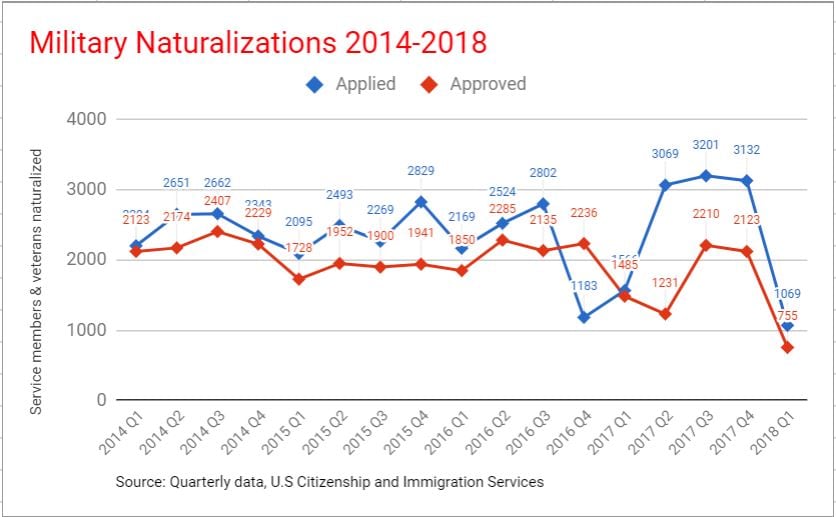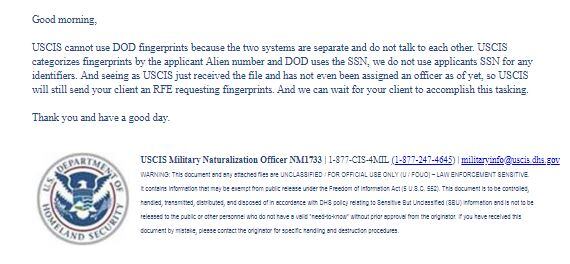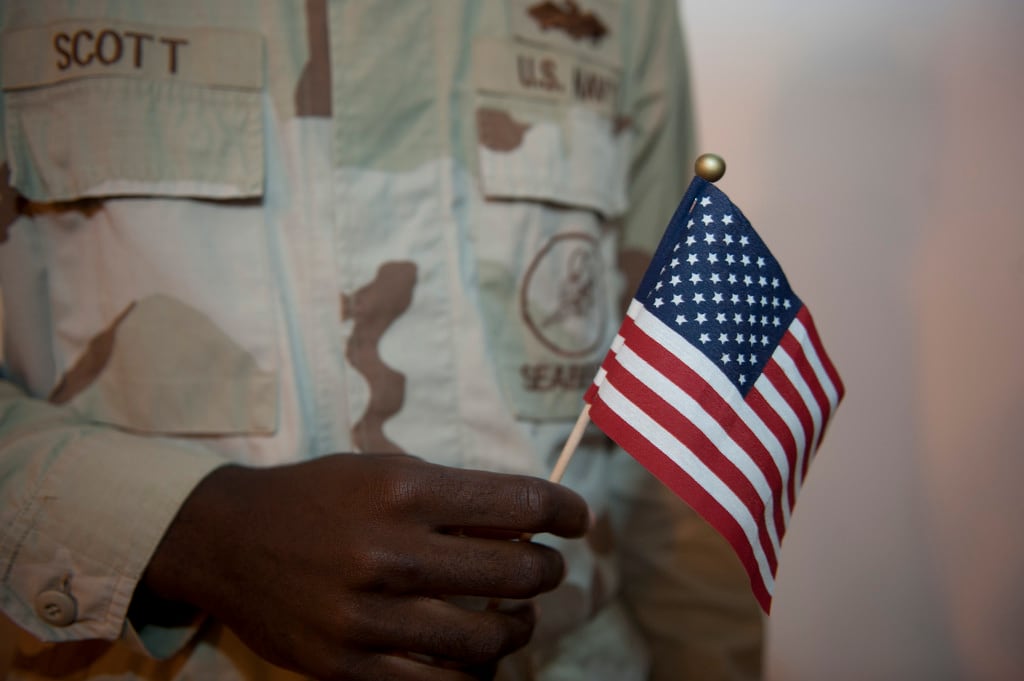The number of service members applying for and earning U.S. citizenship through military service has dropped 65 percent since Defense Secretary Jim Mattis directed additional background checks for non-citizen troops, Military Times has found.
In October 2017, Mattis directed policy changes, linked below, that added additional reviews of non-citizen service members and extended time in service before they could receive necessary paperwork to pursue naturalization. In the first set of data available since the new policy, the number of applicants dropped from 3,132 in the last quarter of fiscal year 2017 to 1,069 in the first quarter of fiscal year 2018, the most recent data available.
The number of service members approved to become naturalized U.S. citizens dropped from 2,123 in the last quarter of fiscal year 2017, which ended Sept. 30, to 755 in the first quarter of fiscal year 2018, which ended Dec. 31, according to the U.S. Citizenship and Immigration Services, or USCIS, agency, which tracks the data.
Non-citizen recruits from that date on have faced additional security reviews prior to entry into the active, Reserve or Guard forces. Now, upon enlistment, any non-citizen service members who seek citizenship must serve at least 180 days, some face another round of screening; and all have had to get a critical form in the process, an N-426 “Request for Certification of Military or Naval Service,” approved by an O-6-level officer or higher, instead of at their personnel office.
Based on a review of data of personnel who have applied and were approved for citizenship since 2014, the USCIS approval rate for service members has remained relatively steady.
However, policy changes by USCIS ― including that it may no longer be accepting DoD-provided fingerprints of applicants, despite federal law to the contrary, coupled with additional requirements before a service member can obtain an N-426 from their service leadership ― has potentially reduced the number of service members moving through military naturalization at the agency.
USCIS disagreed with the assertion that it is not following the law, and said that provisions of the Kendall Frederick Law allow for the agency to request and collect its own fingerprints instead of using DoDs when it would be easier for an applicant.

USCIS said in a statement to Military Times that “as a result of the DOD memorandum from Oct 2017, USCIS continues to process military applications once the naturalization application and certification of honorable service have been received and all required DOD security checks have been completed.”
“Working with military members continues to be a priority within the agency, and we all recognize the significant contribution from those who serve within the ranks of our nation’s armed forces and the family members who support them,” the agency said.
However, USCIS’ decision to no longer accept the DoD fingerprints may make it more difficult for service members to get naturalization paperwork in order. In correspondence obtained by the Military Times, USCIS said it is no longer accepting the DoD fingerprints.

USCIS is required by the Kendell Frederick Citizenship Assistance Act, a law Congress passed in 2008, to accept DoD fingerprints. U.S. Army Reserve Sgt. Kendell Frederick was killed in Iraq in 2005. He’d tried to complete the necessary paperwork to become a citizen for more than a year, and while in Iraq, was told he had to submit fingerprints. He was killed by a roadside bomb as he traveled in a convoy to an off-base location to get his fingerprints taken.
In a follow-up, a DHS official said the agency is in compliance with the Kendell Frederick Act.
“If DHS determines that new biometrics would result in more timely and effective adjudication of the individual’s naturalization application, DHS must inform the applicant of this determination and provide the applicant with information on how to submit fingerprints,“ an agency official said on the condition of not being identified.
“When the military applicant is unable to attend an appointment at an Application Support Center due to their military service, the USCIS National Benefits Center will work with the field office to have the biometrics completed remotely or can even have the applicant submit 2 FD-258 cards to be scanned in and processed. Both of these methods have been found to be faster than requesting a CD from DOD of the fingerprints,” the official said.
In a briefing with reporters Thursday, Pentagon spokesperson Dana White said the military still values non-citizen soldiers’ contributions, and that the delays and bureaucratic issues encountered as the DoD revises military naturalization may be a part of adjusting to the new, stricter process.
“It’s still our intent to recruit every patriot who is qualified to serve,” White said. “But yes, with the enhanced vetting, there is a process. And that process has to move forward. So there may be a bit of a delay because of that, but we also need to ensure, because we did identify a problem, a security problem, we do need to ensure that we vet these people thoroughly.”
Tara Copp is a Pentagon correspondent for the Associated Press. She was previously Pentagon bureau chief for Sightline Media Group.









